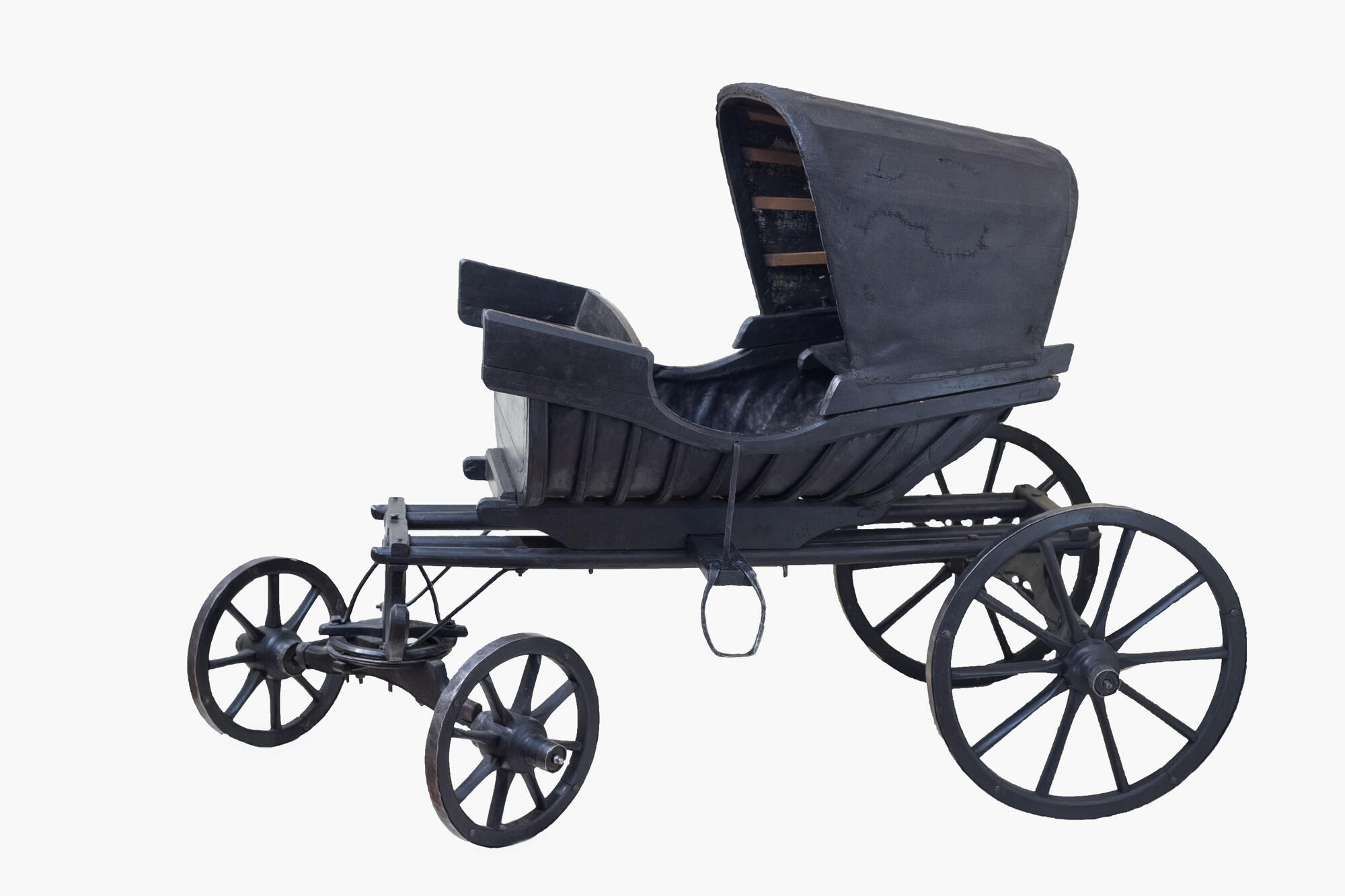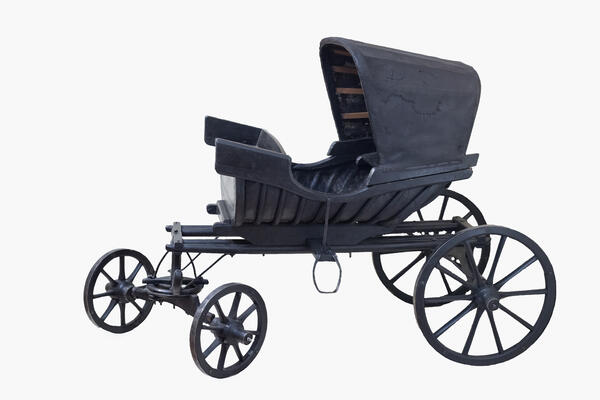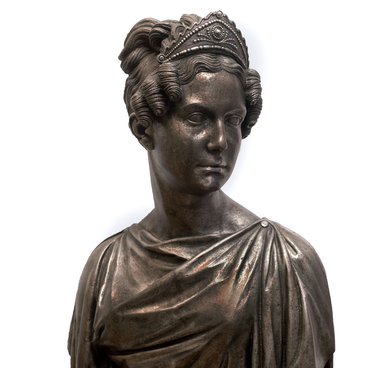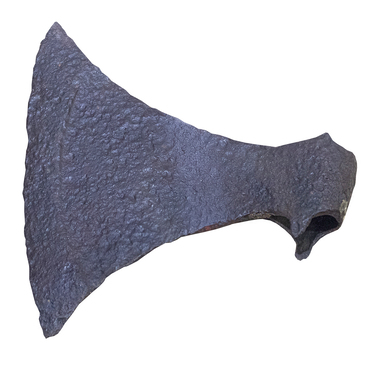The tarantass is a four-wheeled horse-drawn covered carriage. Usually it was used for long-distance trips: special longitudinal mounts called “drogi” reduced road jolting. A tarantass accommodated four passengers.
The origin of the word “tarantass” is still unknown. Scientists claim that it came from the Vyatka dialects or from the Tatar language, and also point to a connection with the Polish word “tarataika” and the verb “tarantat” meaning “to rattle, to creak, to crack”, which is found in some dialects of the Russian language.
A tarantass scale model is displayed in the section “Provincial capital. Petrozavodsk in the late 19th — early 20th century”. This exhibit was on display during the very first exhibition of the Olonets natural-industrial and historical-ethnographic museum, which was founded by the governor Grigory Grigoriev in 1871. The provincial Petrozavodsk was a big town at that time; its population was about 20 thousand people. According to social stratum, the inhabitants of the town were divided into the nobility, the clergy, hereditary honorary citizens and merchants. The most numerous class were the bourgeois — 11 thousand people. The bourgeoisie was the name for the lowest class of urban dwellers. They could be subjected to corporal punishment and carried tribute (tax) and recruiting (military) duties.
In addition to the largest plant in the province — the Aleksandrovsky factory — other enterprises also operated in the town: three small private sawmills, a brick factory, a tannery factory, a match factory, a candle factory, a cardboard factory, a brewery, and two printing houses. The town was the largest trade center in the province. Gostiny Dvor, which had 78 shops, accounted for up to two-thirds of the total volume of trade. The town also had two locksmiths, five shoemakers, seven tailors, seven bakeries, three hairdressers, one wine warehouse, wine and beer shops, an inn, buffets and a hotel.
It was possible to get from Petrozavodsk to other cities and towns by water and by horse-drawn transport. Moreover, the residents of the town used passenger and draft carriages. Heavy draft horses were used for haulage; they were distinguished by their large size and strength. Horse breeders of Onega district raised large horses that could be up to 170 centimeters at the withers. Due to unsuccessful breeding experiments and animal epidemics, this breed became extinct.
The origin of the word “tarantass” is still unknown. Scientists claim that it came from the Vyatka dialects or from the Tatar language, and also point to a connection with the Polish word “tarataika” and the verb “tarantat” meaning “to rattle, to creak, to crack”, which is found in some dialects of the Russian language.
A tarantass scale model is displayed in the section “Provincial capital. Petrozavodsk in the late 19th — early 20th century”. This exhibit was on display during the very first exhibition of the Olonets natural-industrial and historical-ethnographic museum, which was founded by the governor Grigory Grigoriev in 1871. The provincial Petrozavodsk was a big town at that time; its population was about 20 thousand people. According to social stratum, the inhabitants of the town were divided into the nobility, the clergy, hereditary honorary citizens and merchants. The most numerous class were the bourgeois — 11 thousand people. The bourgeoisie was the name for the lowest class of urban dwellers. They could be subjected to corporal punishment and carried tribute (tax) and recruiting (military) duties.
In addition to the largest plant in the province — the Aleksandrovsky factory — other enterprises also operated in the town: three small private sawmills, a brick factory, a tannery factory, a match factory, a candle factory, a cardboard factory, a brewery, and two printing houses. The town was the largest trade center in the province. Gostiny Dvor, which had 78 shops, accounted for up to two-thirds of the total volume of trade. The town also had two locksmiths, five shoemakers, seven tailors, seven bakeries, three hairdressers, one wine warehouse, wine and beer shops, an inn, buffets and a hotel.
It was possible to get from Petrozavodsk to other cities and towns by water and by horse-drawn transport. Moreover, the residents of the town used passenger and draft carriages. Heavy draft horses were used for haulage; they were distinguished by their large size and strength. Horse breeders of Onega district raised large horses that could be up to 170 centimeters at the withers. Due to unsuccessful breeding experiments and animal epidemics, this breed became extinct.



